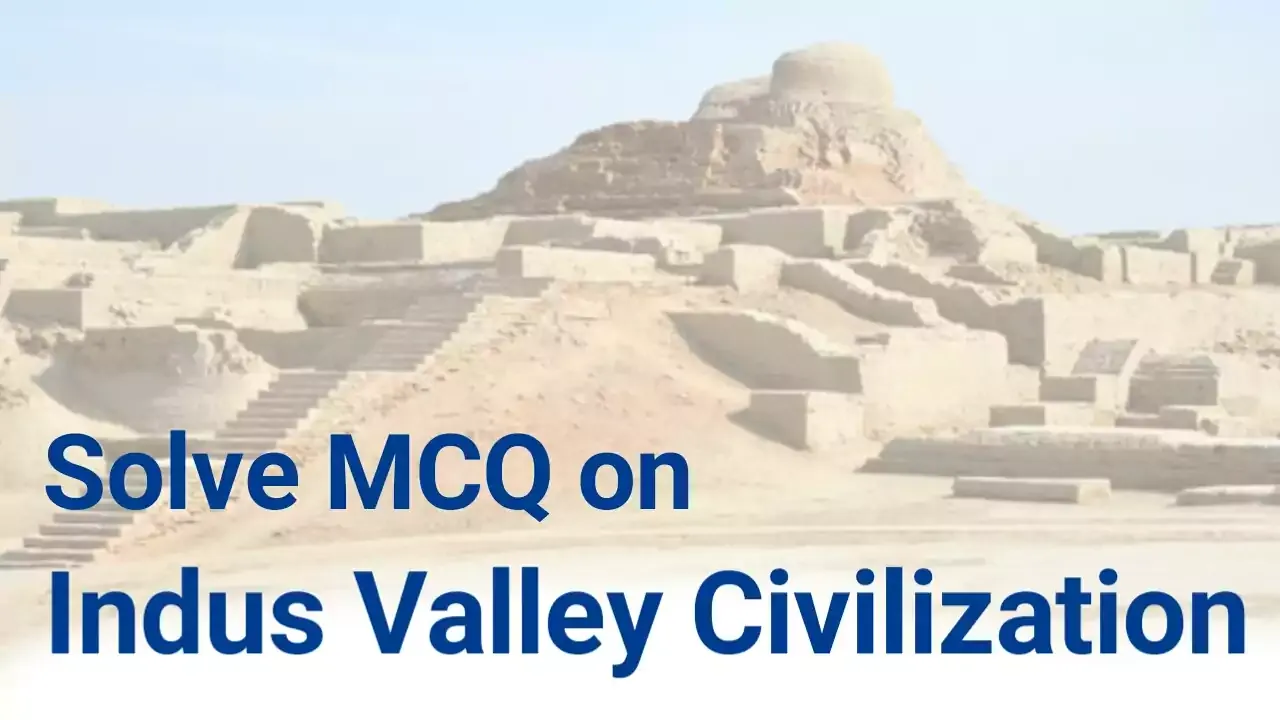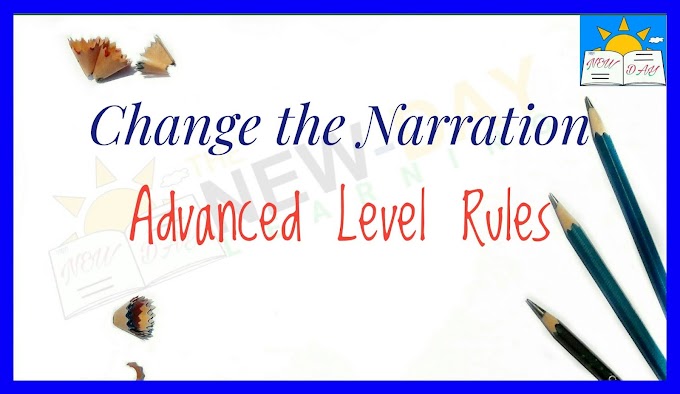In this article we'll be solving MCQs on chapter Indus Valley Civilization. I choose 40 questions for you. Answers are also given below each corresponding question.
Total Questions:
Attempt:
Correct:
Wrong:
Percentage:
1. Harappan Civilization was a/an –
A. Rural Civilization
B. Urban Civilization
C. Semi-urban Civilization
D. The people were nomadic
Ans: B
2. The Indus Valley Civilisation was a –
A. Bronze age civilisation.
B. Chalcolithic age civilisation.
C. Mesolithic age civilisation.
D. Neolithic age civilisation.
Ans: A
3. The duration of Mature Harappan Phase –
A. 1900 – 1300 BCE
B. 2600 – 1900 BCE
C. 1500 – 1000 BCE
D. 3200 – 2600 BCE
Ans: B
4. The north-south extension of the Indus civilisation was –
A. From Punjab to southern Gujarat.
B. From Jammu to northern Maharashtra.
C. From PoK to Gujarat.
D. From Jammu to southern Gujrat.
Ans: D
5. The Indus Valley civilisation was a contemporaneous of –
A. Mesopotamian civilisation
B. Egyptian civilisation
C. Chinese civilisation
D. All of them
Ans: D
6. What did Mesopotamians call the Indus region?
A. Hindu
B. Dilmun
C. Meluhha
D. All of the above.
Ans: C
7. The trade was conducted by means of –
A. Silver coin
B. Copper coin
C. Currency notes
D. Barter
Ans: D
8. The houses were built using –
A. Stone add mud.
B. Burnt bricks
C. Leaves and branches
D. Tiles
Ans: B
9. Lapis lazuli used to be imported from –
A. Afghanistan
B. Iran
C. Mesopotamia
D. Iraq
Ans: A
10. Turquoise was imported from –
A. Afghanistan
B. Iraq
C. Baluchistan
D. Persia
Ans: D
11. Harappan people were _______ .
A. Proto Australoid
B. Caucasoid
C. Mediterranean
D. Both A and C.
Ans: D
12. How many Hindu temples have been excavated from Harappan sites so far?
A. 6
B. 4
C. 12
D. 0
Ans: D
13. The main deity of Harappan people was –
A. Mother goddess
B. Proto-Shiva
C. Pipal tree
D. Unicorn
Ans: A
14. Harappan people did not worship –
A. Birds
B. Lord Shiva
C. Lord Vishnu
D. Humped bull
Ans: C
15. The Pashupati Mahadeva (Proto-Shiva) is surrounded by 5 animals – a rhino, a bull, an elephant _____ _____.
A. A tiger and a snake.
B. A deer and a snake.
C. A tiger and a deer.
D. A snake and a horse.
Ans: C
16. Which birds were worshipped in IVC?
A. Owl and crow
B. Owl and pigeon
C. Dove and pigeon.
D. Eagle and owl
Ans: C
17. Which statement(s) is/are not true regarding Harappan society?
- i) It was a secular society
- ii) People believed in Idolatry (idol worship)
- iii) Some of their tools were made of iron
- iv) They did not know the use of cotton.
A. Only i and iii
B. Only iii and iv
C. Only i, iii and iv.
D. All of them.
Ans: B
18. Which statement is true regarding Harappan people?
- i) People were good at metallurgy.
- ii) Their script was pictographic.
- iii) They used red black pottery to store grains.
- iv) They used to wear gold and silver jewellery.
A. Only i and iii
B. Only iii and iv
C. Only i, iii and iv.
D. All the statements.
Ans: D
19. Which statement is true regarding Harappan script?
- i) It was logosyllabic and pictographic.
- ii) The writing style was from right to left.
- iii) It has not been deciphered till now.
A. Only i and iii.
B. Only ii and iii.
C. Only ii.
D. All of them.
Ans: B
20. Harappan people did not cultivate
A. Barley
B. Henna
C. Sugarcane
D. Dates
Ans: C
21. The length : width : height of bricks =
A. 2 : 7 : 14
B. 1 : 2 : 4
C. 2 : 14 : 7
D. 1 : 3 : 6
Ans: B
22. The streets running from north cut the small roads
A. At right angle
B. Diagonally
C. At oblique angle
D. At left angle.
Ans: A
23. The historian who considered Aryan Invasion as the cause of the decline of IVC –
A. Fairchild
B. Wheeler and Gordon
C. Raikes and Dale
D. Macay and S.R. Rao
Ans: B
24. The historian who considered Flood as the cause of the decline of IVC –
A. Fairchild and Raikes
B. Gordon
C. Dale
D. Macay and S.R. Rao
Ans: D
25. The historian who considered External Aggression as the cause of the decline of IVC –
A. V. Gordon Child
B. Wheeler
C. Raikes
D. S.R. Rao
Ans: A
26. Arrange these three major sites from larger to smaller:
Harappa, Mohenjo-Daro, Rakhigarhi. Banwali
A. Rakhigarhi > Harappa > Mohenjo-Daro > Banwali.
B. Rakhigarhi > Banwali > Mohenjo-Daro > Harappa.
C. Harappa > Mohenjo-Daro > Rakhigarhi > Banwali.
D. Mohenjo-Daro > Rkhigarhi > Banwali > Harappa.
Ans: B
27. Which of the sites was known as “Mound of the dead” –
A. Harappa
B. Mohenjo-Daro
C. Kalibangan
D. Chanho-Daro
Ans: B
28. Terracotta models of plough were found in –
A. Banawali
B. Bahawalpur
C. Both
D. None
Ans: C
29. Fire-altars have been found in
A. Kalibangan
B. Lothal
C. Both A & B
D. Surkotada
Ans: C
30. The meaning of the word ‘Kalibangan’ is –
A. Black bangles
B. Mound of the dead
C. Garden of the goddess Kali
D. All of them
Ans: A
31. Ropar is situated beside the river –
A. Sutlej
B. Indus
C. Ghggar
D. Ravi
Ans:
32. The only Harappan site without a citadel
A. Rangpur
B. Dholavira
C. Surkotada
D. Chanhu-Daro
Ans: D
33. Ink-pot was found in
A. Chanhu-Daro
B. Kalibangan
C. Lothal
D. Dholavira
Ans: A
34. Match the following –
| Sites | Findings |
|---|---|
| a. Banwali | i. Bones of horses |
| b. Surkotada | ii. Signboard |
| c. Dholavira | iii. Terracotta model of ship |
| d. Lothal | iv. Clay model of plough |
A. a – iii, b – i, c – iv, d – ii
B. a – iv, b – iii, c – ii, d – i
C. a – iv, b – iii, c – i, d – iii
D. a – iii, b – i, c – ii, d – iv
Ans: B
35. Which pair of site and river is wrong?
A. Harappa – Ravi
B. Amri – Sindh
C. Ropar – Sutlej
D. Lothal – Narmada
Ans: D
36. Match the following –
| Sites | Findings |
|---|---|
| a. Kalibangan | i. Rows of six granaries |
| b. Harappa | ii. Great bath |
| c. Lothal | iii. Ploughed fields |
| d. Mohenjo-Daro | iv. Dockyard |
37. Match the following –
| Sites | Excavators |
|---|---|
| a. Mohenjo-Daro | i. J.P. Joshi |
| b. Harappa | ii. S.R. Rao |
| c. Dholavira | iii. Rakhal Das Banerjee |
| d. Lothal | iv. Dayaram Sahani |
A. a – iii, b – i, c – iv, d – ii
B. a – iii, b – iv, c – i, d – ii
C. a – ii, b – i, c – iv, d – iii
D. a – iii, b – iv, c – ii, d – i
Ans: D
38. A bronze dancing girl was excavated from
A. Mohenjo-Daro
B. Harappa
C. Kalibangan
D. Chanhu-Daro
Ans: A
39. In Dholavira _______ was excavated.
A. A large granary.
B. Burial of dog below human.
C. Giant water reservoir.
D. Terracotta models of plough.
Ans: C
40. A seal representing a bearded man was excavated from
A. Harappa
B. Mohenjo-Daro
C. Kalibangan
D. Chanhu-Daro
Thank you ...
Visit again.





%20(1).webp)


%20(1).webp)
0 Comments
Leave a comment